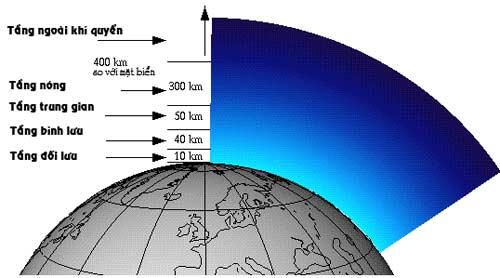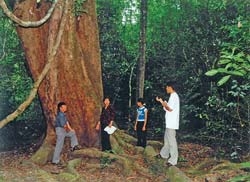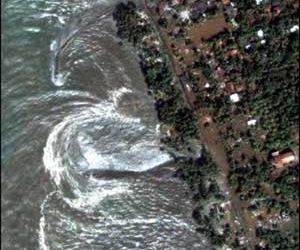Surrounding the Earth is a layer of atmosphere, often referred to as “a thick blanket.” Humanity and all life exist at the bottom of this invisible, intangible layer. Within this atmosphere, many wondrous natural phenomena occur, ensuring the survival of life.
The composition of the atmosphere is quite complex. In addition to oxygen and nitrogen, it contains hydrogen, carbon dioxide, helium, neon, argon, krypton, xenon, ozone, and more. Nitrogen makes up 78.09% and oxygen accounts for 20.95% of the total volume of air, while all other gases combined comprise less than 1%. The atmosphere also contains a certain amount of water vapor and various types of dust. These substances are essential for the formation of clouds, rain, dew, and snow.
Although the air in the atmosphere is invisible, it has an enormous weight. According to scientists’ estimates, the layer of air enveloping the Earth weighs more than 500 billion tons. If humans were to exist on Earth without the outward pressure of their bodies, they would be crushed to pieces. Due to the gravitational pull of the Earth, 9/10 of the atmosphere’s weight is concentrated in the layer close to the ground, within approximately 16 km. As altitude increases, the air becomes thinner.
The thickness of the atmosphere is about 2,000 to 3,000 km. Due to the varying properties of air at different altitudes, meteorologists have divided the atmosphere into several layers:
 |
|
Layers of the Atmosphere |
– The layer closest to the ground is called the troposphere. The average thickness of this layer at mid-latitudes is 16-18 km, while at the poles it is 7-10 km. A characteristic of the troposphere is that as altitude increases, the temperature decreases. The air in the troposphere moves vigorously both vertically and horizontally, causing water to change among all three states and initiating numerous physical changes. Phenomena such as rain, hail, wind, snow, frost, and fog occur in the troposphere.
– Above the troposphere, extending up to 50 km, is the stratosphere. In this layer, the air is thin, with very little water and dust. The air primarily moves horizontally and is very stable, making it ideal for aircraft.
– From the stratosphere up to an altitude of 85 km is the mesosphere. The air temperature in this layer becomes colder, reaching a low of -90 degrees Celsius. The upper part of this layer contains a small amount of water vapor and occasionally features some noctilucent clouds.
– The layer of air from 85 km to 500 km is known as the thermosphere. A defining characteristic of this layer is that temperatures increase with altitude. At 400 km above the Earth’s surface, the temperature can reach around 3,000 – 4,000 degrees Celsius. Oxygen and nitrogen in this layer exist in an ionized state, which is why it is referred to as the ionosphere. Radio waves emitted from a location on the Earth’s surface must reflect off the ionosphere to be transmitted around the world.
– Above the thermosphere is the exosphere. Its lower boundary lies around 800-1,000 km, extending up to 3,000 km. This region serves as a transition zone between the Earth’s atmosphere and outer space. Because the air here is very thin and the temperatures are extremely high, some molecules and atoms move at such high speeds that they attempt to “struggle” free from the gravitational pull of the Earth and escape into outer space. Thus, this layer is also known as the escape layer.





















































